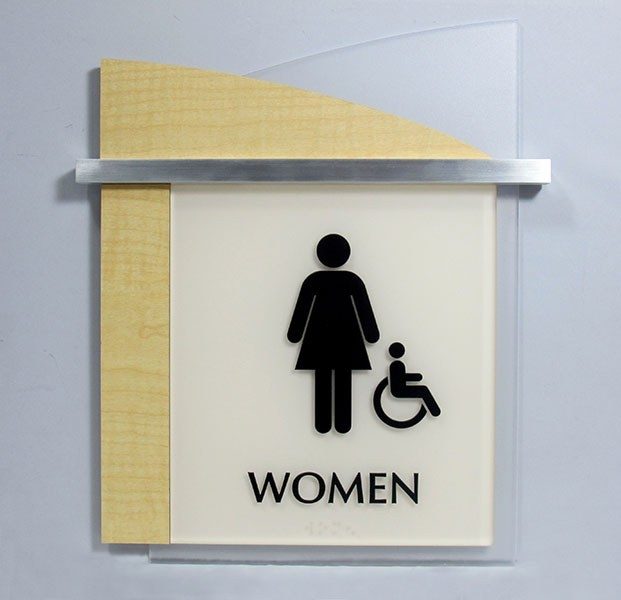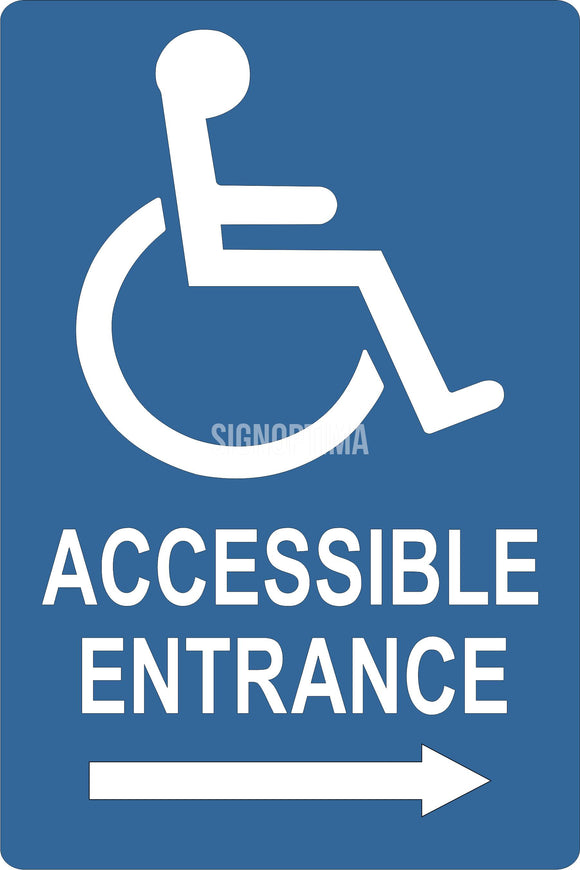Understanding the Rules Behind ADA Signs
Understanding the Rules Behind ADA Signs
Blog Article
Discovering the Trick Functions of ADA Signs for Boosted Ease Of Access
In the world of ease of access, ADA signs offer as quiet yet effective allies, making sure that areas are comprehensive and accessible for individuals with impairments. By integrating Braille and responsive components, these indicators break barriers for the aesthetically damaged, while high-contrast shade plans and clear fonts satisfy diverse visual needs. Their calculated placement is not approximate however rather a computed effort to facilitate smooth navigation. Yet, past these functions lies a much deeper narrative regarding the development of inclusivity and the ongoing dedication to creating fair spaces. What extra could these indications signify in our quest of global availability?
Significance of ADA Compliance
Making certain compliance with the Americans with Disabilities Act (ADA) is crucial for promoting inclusivity and equivalent gain access to in public rooms and work environments. The ADA, established in 1990, mandates that all public facilities, employers, and transport solutions suit individuals with specials needs, guaranteeing they delight in the same legal rights and possibilities as others. Conformity with ADA standards not just fulfills legal responsibilities yet additionally improves a company's online reputation by showing its dedication to variety and inclusivity.
One of the crucial facets of ADA compliance is the implementation of accessible signs. ADA signs are developed to ensure that people with disabilities can conveniently navigate with areas and buildings.
Additionally, adhering to ADA regulations can alleviate the danger of legal repercussions and possible fines. Organizations that fail to follow ADA standards might face penalties or legal actions, which can be both damaging and monetarily troublesome to their public picture. Thus, ADA conformity is essential to cultivating an equitable setting for every person.
Braille and Tactile Elements
The unification of Braille and responsive elements right into ADA signs embodies the principles of access and inclusivity. It is typically put under the equivalent text on signage to ensure that people can access the info without aesthetic aid.
Responsive elements extend past Braille and include increased signs and characters. These components are designed to be discernible by touch, allowing people to recognize area numbers, washrooms, departures, and other vital areas. The ADA sets certain standards pertaining to the dimension, spacing, and placement of these tactile components to optimize readability and guarantee consistency throughout different atmospheres.

High-Contrast Color Pattern
High-contrast shade plans play a critical duty in improving the visibility and readability of ADA signage for individuals with aesthetic disabilities. These schemes are crucial as they make the most of the difference in light reflectance between message and background, making certain that indications are quickly discernible, even from a range. The Americans with Disabilities Act (ADA) mandates making use of specific color contrasts to fit those with limited vision, making it an essential facet of compliance.
The efficiency of high-contrast colors depends on their ability to attract attention in different lights conditions, including dimly lit settings and areas with glow. Typically, dark message on a light background or light text on a dark history is employed to accomplish optimum contrast. Black text on a yellow or white history offers a plain visual difference that assists in fast acknowledgment and comprehension.

Legible Fonts and Text Dimension
When considering the design of ADA signage, the selection of legible typefaces and suitable text size can not be overstated. The Americans with Disabilities Act (ADA) mandates that fonts have to be sans-serif and not italic, oblique, script, highly decorative, or of uncommon kind.
According to ADA guidelines, the minimum text elevation ought to be 5/8 inch, and it needs to boost proportionally with viewing range. Consistency in message size basics adds to a cohesive aesthetic experience, assisting individuals in browsing environments successfully.
Moreover, spacing in between lines and letters is indispensable to clarity. recommended you read Adequate spacing stops characters from appearing crowded, boosting readability. By sticking to these standards, designers can considerably improve access, guaranteeing that signage serves its desired purpose for all people, regardless of their visual capacities.
Efficient Positioning Strategies
Strategic positioning of ADA signage is crucial for optimizing access and making certain conformity with lawful requirements. ADA guidelines stipulate that indicators need to be placed at a height between 48 to 60 inches from the ground to guarantee they are within the line of view for both standing and seated individuals.
In addition, indicators have to be placed adjacent to the latch side of doors to allow simple recognition before entry. This positioning aids individuals find areas and areas without obstruction. In instances where there is no door, indicators must be situated on the nearest surrounding wall surface. Consistency in indicator positioning throughout a facility improves predictability, decreasing complication and enhancing overall customer experience.

Conclusion
ADA indicators play an important function in advertising access by incorporating features that deal with the demands of people with specials needs. These aspects jointly foster an inclusive atmosphere, underscoring the value of ADA compliance in making sure equal access for all.
In the world of ease of access, ADA signs offer as silent yet effective allies, making certain that areas are comprehensive and navigable for individuals with specials needs. The ADA, passed in 1990, mandates that all public centers, employers, and transportation solutions accommodate people with specials needs, ensuring they take pleasure in the exact same legal rights and chances as others. ADA Signs. ADA signs are made to guarantee that people with specials needs can easily browse via spaces and buildings. ADA standards specify that indications should be installed at an elevation between 48 to 60 inches from the ground to guarantee they are within websites the line of sight for both standing and seated people.ADA signs play an essential duty in promoting accessibility by incorporating features that deal with the requirements of individuals with specials needs
Report this page